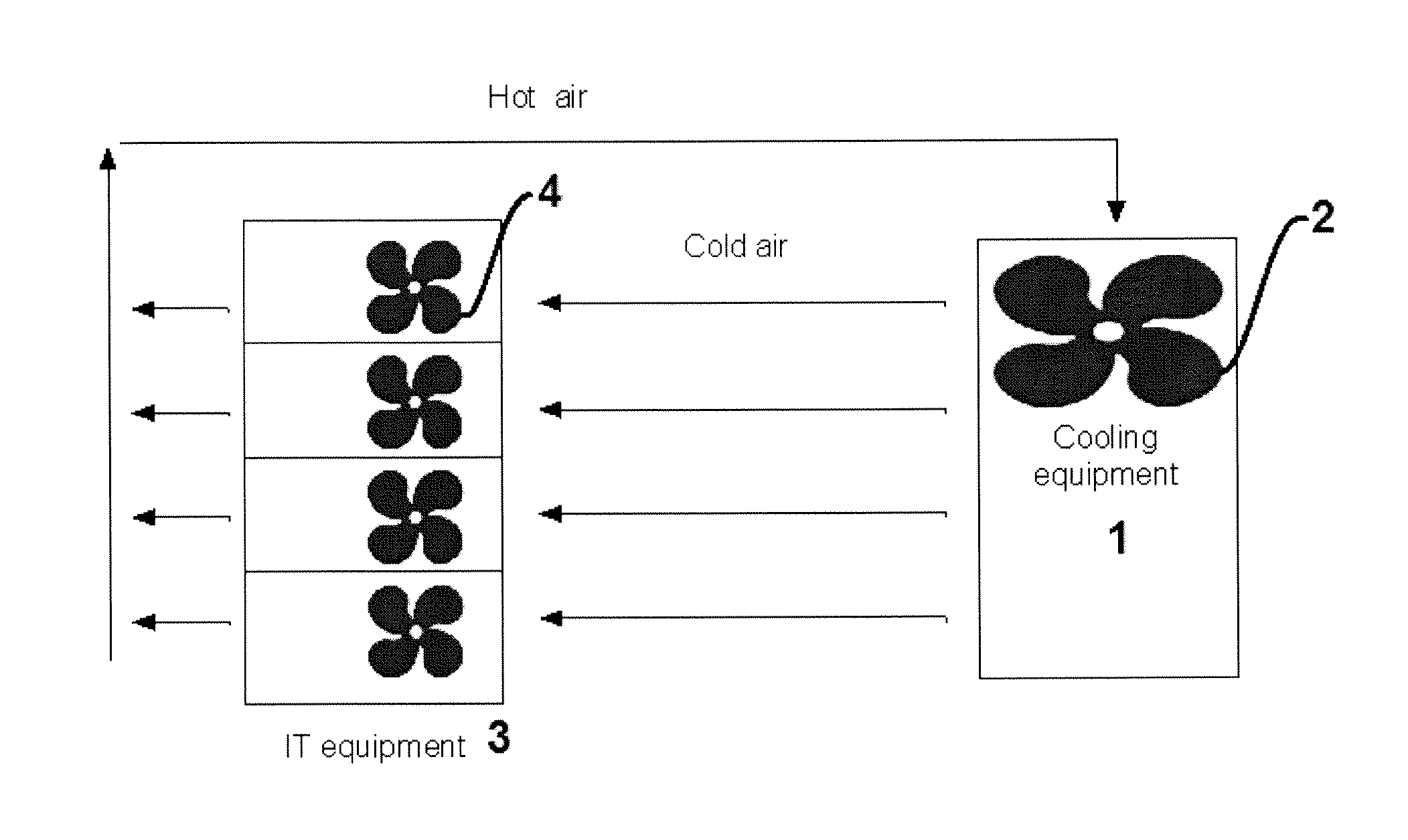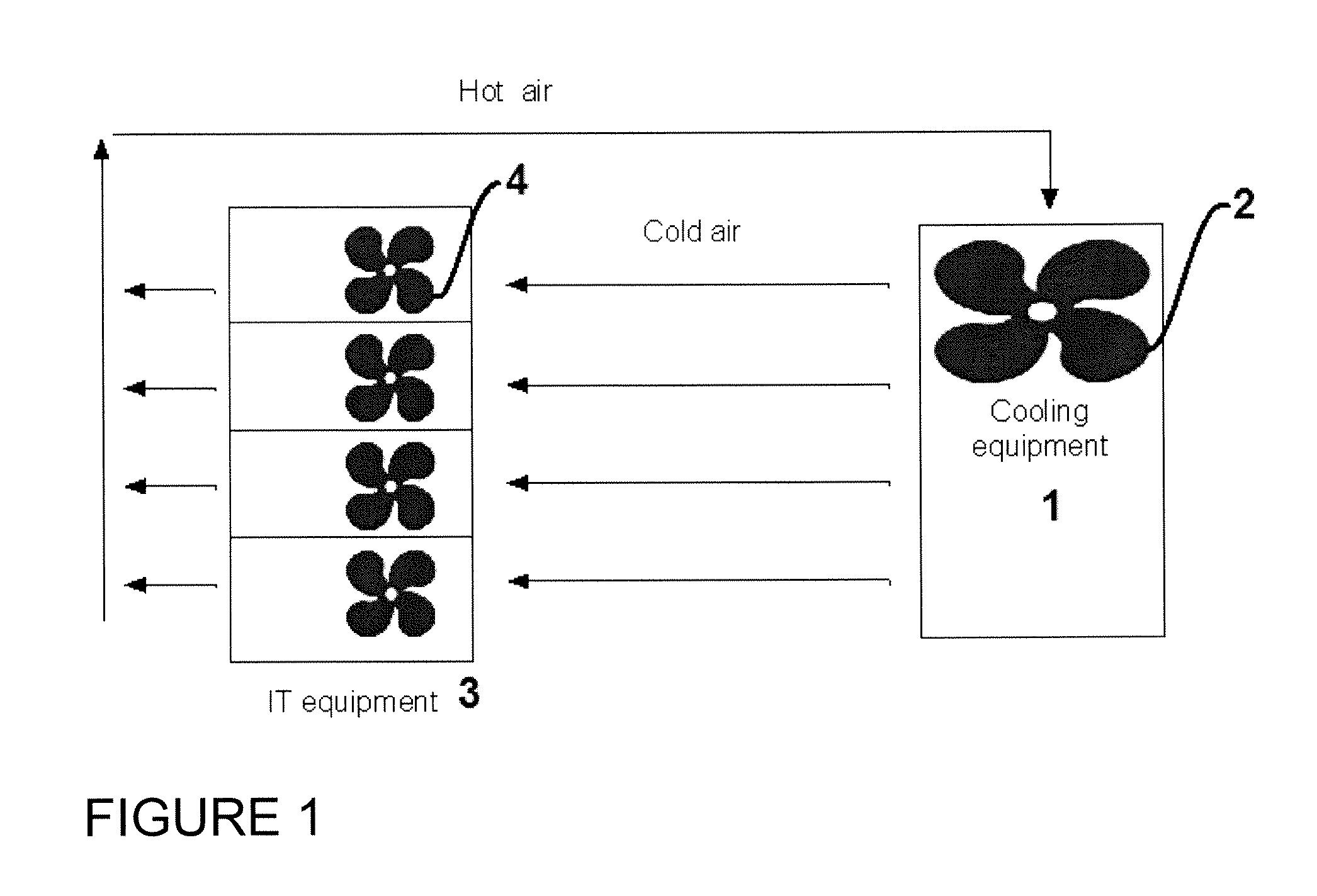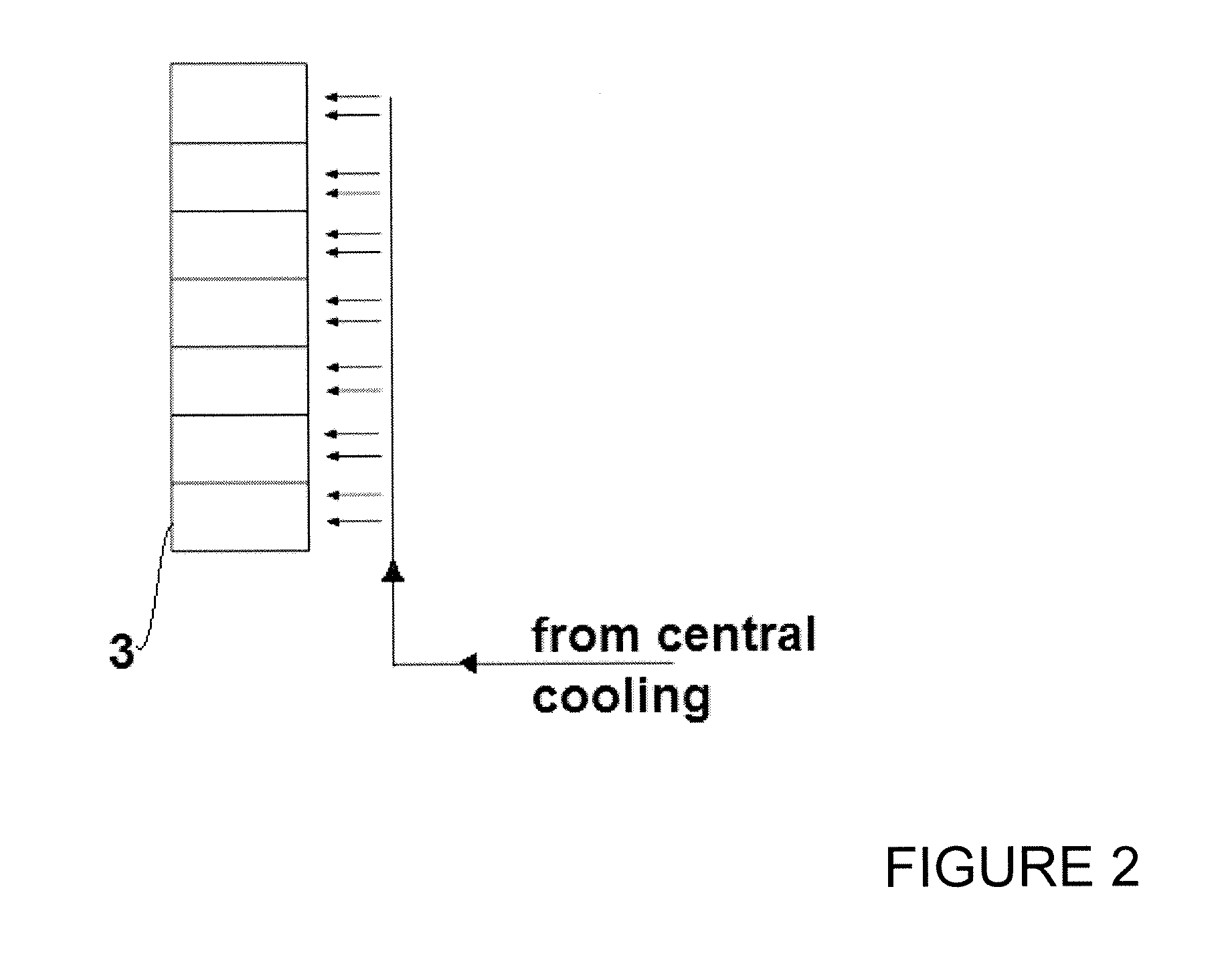Computing device, method, and computer program for controlling cooling fluid flow into a computer housing
a computing device and cooling fluid technology, applied in the direction of electrical apparatus casings/cabinets/drawers, electrical apparatus construction details, instruments, etc., can solve the problems of under-cooling or over-cooling of computing devices, and the cooling fluid does not necessarily get, so as to achieve good supply
- Summary
- Abstract
- Description
- Claims
- Application Information
AI Technical Summary
Benefits of technology
Problems solved by technology
Method used
Image
Examples
Embodiment Construction
[0066]FIG. 4 is a schematic illustration of a computing device 10 embodying the present invention. Certain typical components of a computing device 10 are omitted for illustration purposes, but computing devices 10 embodying the present invention may also comprise one or more of the following components: cpu, a storage unit, memory, I / O devices, motherboard, display unit. Furthermore, one or more of those components may provide hardware contributing to the functionality of the illustrated components. The illustrated components are a temperature monitor 12, a cooling fluid drawing mechanism 14, a cooling fluid drawing controller 16, and an indication receiver 20. The indication receiver 20 is illustrated in dashed lines to denote that it is optional in invention embodiments, although some means for generating and / or receiving indications is required, it may, for example, be a function of another component, such as the cooling fluid drawing controller 16. The components are housed wit...
PUM
 Login to view more
Login to view more Abstract
Description
Claims
Application Information
 Login to view more
Login to view more - R&D Engineer
- R&D Manager
- IP Professional
- Industry Leading Data Capabilities
- Powerful AI technology
- Patent DNA Extraction
Browse by: Latest US Patents, China's latest patents, Technical Efficacy Thesaurus, Application Domain, Technology Topic.
© 2024 PatSnap. All rights reserved.Legal|Privacy policy|Modern Slavery Act Transparency Statement|Sitemap



